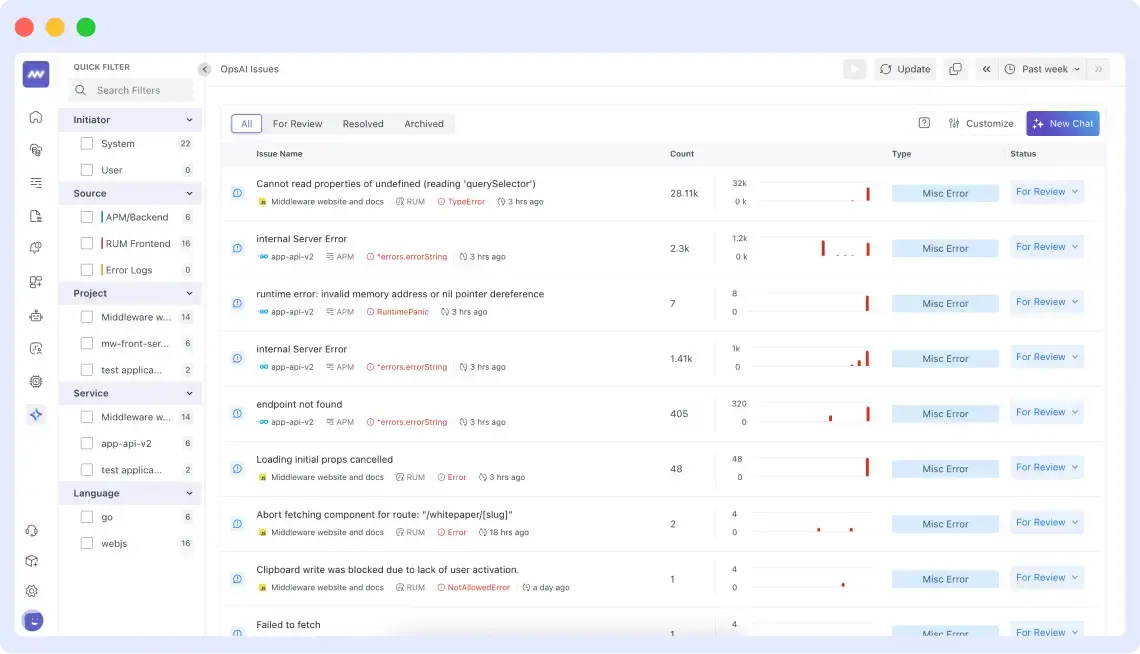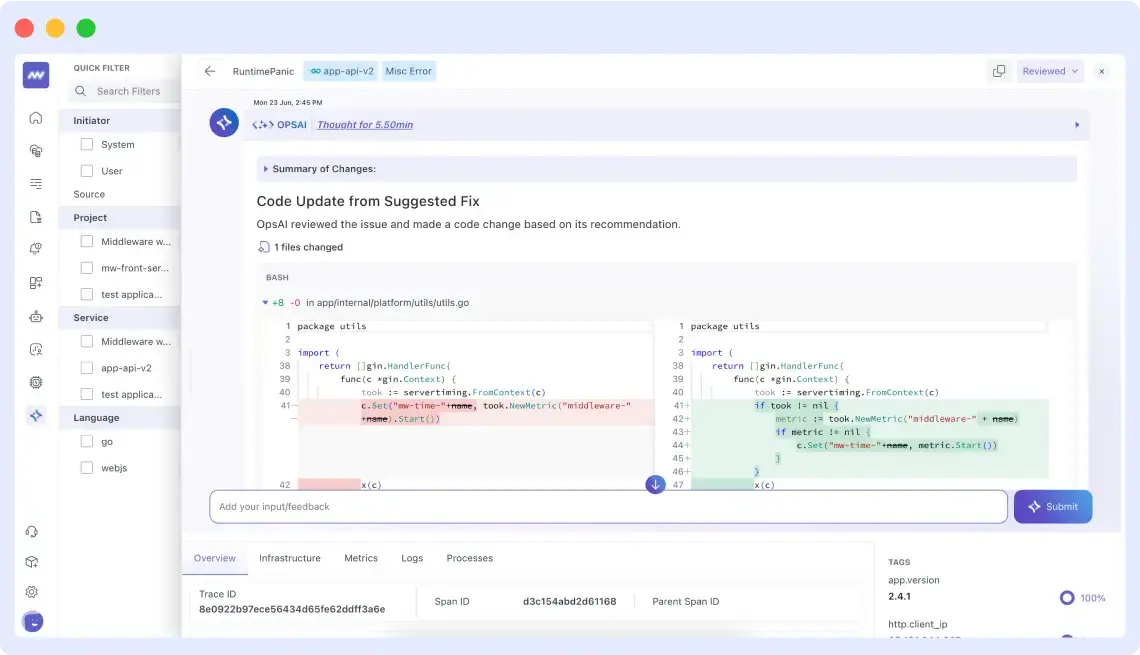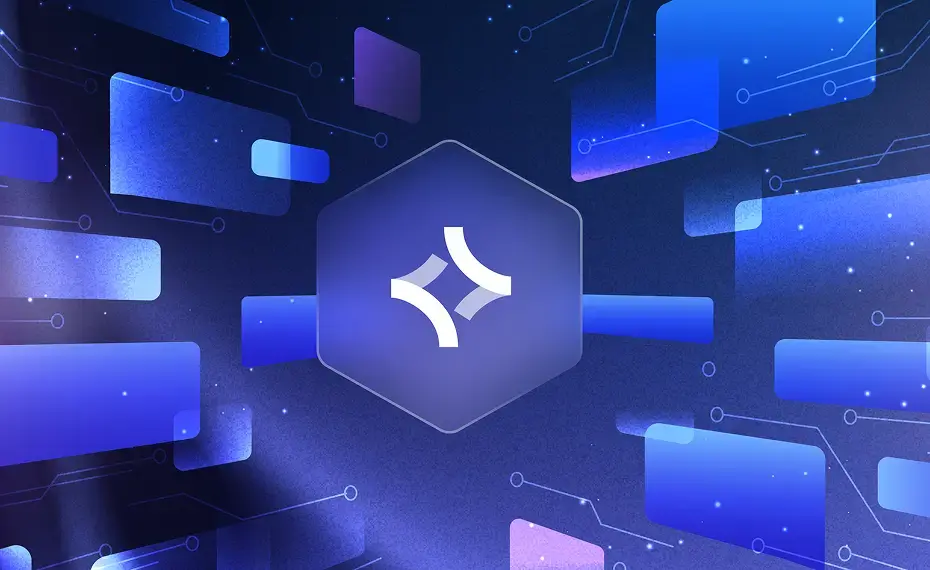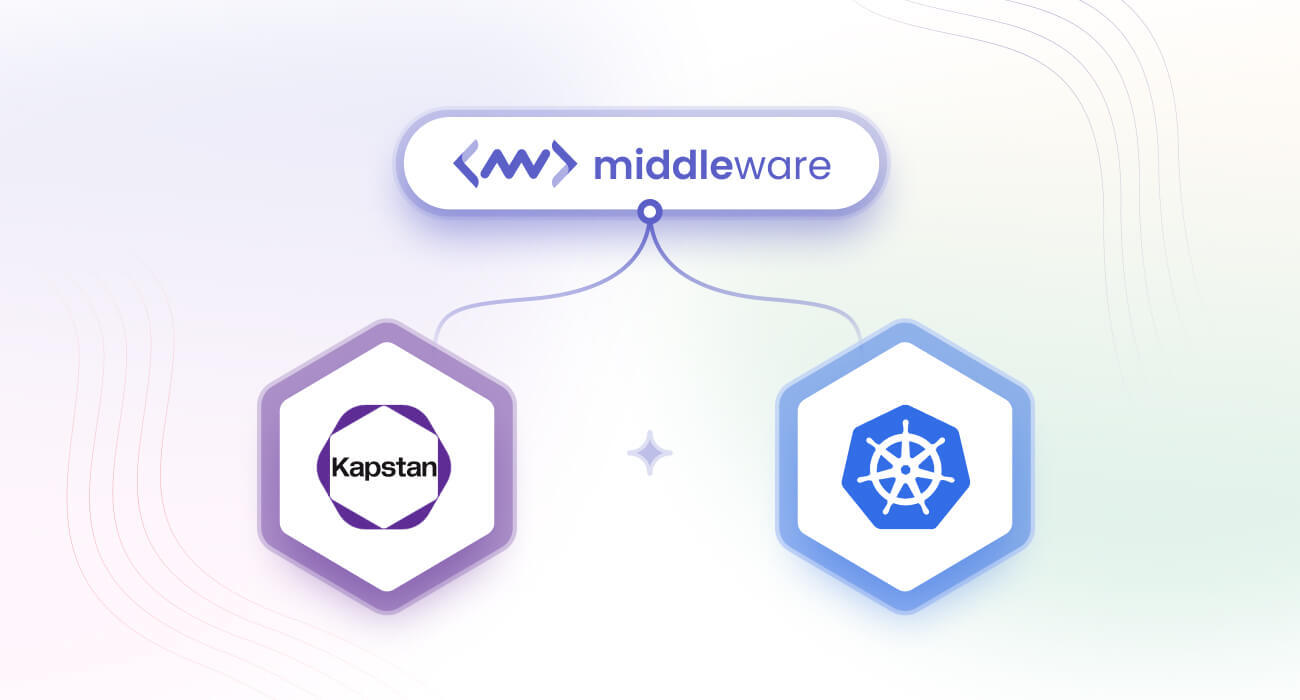Error tracking and performance monitoring of the platform or applications have been stuck in the past with static dashboards and manual detective work to sift through logs to find bugs. Currently, developers spend almost 60% of their time on finding the root cause of errors and fixing them.
At Middleware, our mission has been to help companies keep their apps available to customers all the time by providing unified observability by collating logs, metrics, and traces in one place. We have always been thinking about how to increase developer productivity.
As we are in the early years of the AI era, we started thinking about building a tool suitable for the new age of computing. New-age programming tools are helping developers generate billions of lines of code every day.
While that means teams are shipping more code faster, it also results in more errors creeping into the codebase and breaking production systems. As the codebase grows, it becomes harder to monitor bugs.
For that, we need an ever-aware tool to observe your codebase. But that’s not enough. Apart from detecting errors, it should also fix these exceptions so your engineers don’t need to hamper their sleep cycle at 3:00 AM.
That’s why we built Ops AI, our new AI co-pilot that spots and explains errors while finding ready fixes for you to apply within seconds.
Why use Ops AI?
Ops AI is an AI observability co-pilot that works across any platform, language, or framework. Ops AI can detect and fix issues across both your frontend and backend. With full awareness of your codebase, it delivers accurate, pinpoint insights into exceptions.
Built on top of Middleware’s trusted APM solution, it leverages deep context from logs, traces, and metrics to provide fast, reliable fixes.
At Middleware, we want to create an environment of trust and safety. That’s why we started using Ops AI for our own system and got robust results.
“We started using Ops AI at Middleware, and it now resolves over half of our production issues automatically. In tests with multiple customers, we’ve seen a detection-to-resolution rate of over 70%. We believe this is a game-changer for observability,”
Laduram Vishnoi, Founder and CEO of Middleware
The new Ops AI tool boosts on-call developer productivity by more than 80% and reduces mean time to respond (MTTR) by 5 times, allowing developers to concentrate on important tasks for creating applications.
Ops AI also learns from historical patterns, and as it catches and fixes more bugs, it becomes smarter as you use it more.
We have created this new tool with privacy-first principles. We don’t use your data to train our AI models.
How does Ops AI work?
On a high level, Ops AI pulls together all issues across your frontend (real-user monitoring) and back-end applications (application performance monitoring) — including syntax errors, code exceptions, and runtime errors in a single report. These issues include details such as error type, frequency, and timeline.
After installing our latest APM agent, customers can connect their GitHub and let our observability AI do its work. You can connect your GitHub account, and Ops AI will automatically collect errors from all your repositories. It helps you identify and fix issues with just one click.
Error/Issue Detection
On a more granular level, once you install the agent, it starts monitoring your application stack. When it catches a code exception, syntax or runtime error, it will use information from traces, logs, request headers and body, error messages, and environment to create a detailed report.

Through GitHub integration, it helps fetch the file and code context to show the exact error location, including the file and line number in your codebase.
Solution Finding
Before solving the error, Ops AI acts as an investigator to find the root cause of the bug using context from the Middleware’s full-stack observability suite.

It observes commits made before the error, code dependencies, past data about similar errors, and other developer activities to build the complete picture to understand what caused the breakdown of the system.
Generating PR and Solutions

All these details are passed to our refactoring agent to get suggestions for the bug fix. Finally, apply them to the code. Ops AI only creates a PR if it’s more than 95% confident of the fix.

For a lower confidence score, it provides all the context for the error to engineers to start debugging without having to spend time going through logs.
What Can AIOps Co-Pilot Do?
- Error Monitoring and Summarization: The tool collects all errors from the front-end, back-end, error logs, and code exceptions to present them in an easily readable format that shows error type, error message, exception, and error code line with complete stack trace. You can also track and manage errors in a more efficient way by assigning statuses like ‘reviewed’, ‘resolved’, and ‘ignored’.
- Detailed Root Cause Analysis: Find the exact place that caused the error through a link to the codebase. It provides detailed error information, including the file name, code line, stack trace, and even related variables and version details. This makes it easy to understand what went wrong, and you can start fixing issues right away without wasting time searching through logs or code.
- One-click error resolution: With Ops AI, you can view the root cause and a recommended one-click fix on a single screen. You can also generate a PR with fixed bugs through this interface to save time and get your application up and running again.
- Preserves your data privacy: Ops AI is designed to maintain the security and integrity of your data. All your inputs and responses are private, and only your team can access them. Plus, the tool doesn’t share AI-generated responses publicly outside your organization.
This AI observability co-pilot summarizes errors, provides root cause analysis, and even auto-generates fixes.
Limitations and What is next?
This launch is the first step towards the future of AI-powered observability. We are working on building upgrades to Ops AI to cover Logs and Kubernetes monitoring.
Our goal is for Ops AI to generate a ready-to-use root cause analysis report before system engineers start investigating. This gives them a head start and saves valuable debugging time.
Middleware and Ops AI currently support Node.js, Golang, Python, Java, and JavaScript. However, we are scaling our development to be compatible with other languages, including Ruby, .NET, PHP, and more. On the version control front, we already have GitHub integration with GitLab and Bitbucket support in the works.
How to get started with Ops AI
At Middleware, we have been helping our clients be AI-ready for a while now. First, our AI-powered search allowed our customers to use natural language to make sense of their data. Then, we used AI to boost anomaly detection and make the systems of our clients more reliable. With Ops AI, we are stepping into the agentic era to create a reliable partner for engineering teams to seamlessly handle production issues.
Ops AI is available for all Middleware’s existing and new customers starting from 25th June. You can try it for 14 days, no extra setup required.
If you have any questions or feedback, we are happy to listen to them. Please reach out to us.



